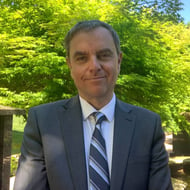 PlotBox Solutions Consultant Joe Witherspoon considers how Catholic Dioceses and Archdioceses should balance tradition and technology in order to meet changing needs in the digital age.
PlotBox Solutions Consultant Joe Witherspoon considers how Catholic Dioceses and Archdioceses should balance tradition and technology in order to meet changing needs in the digital age.
This morning, while getting a ride from a conference I am at all week near Spokane Washington, I was chatting with my shuttle driver, Vince, and explained why I was in town. “Funeral show, huh?”, he said, after explaining that I was attending the Washington State Funeral Directors Association gathering here. “I knew a funeral director once,” he went on. “Course, he’s passed now, but he helped me find my grandmother”.
I went on about how the company I work for serves a related purpose and we talked about how PlotBox solves the problem of helping cemeteries and funeral homes to manage records and information, to improve the kind of experience he had regarding his grandmother.
That classic driver/passenger conversation got me pondering the challenges we help solve here at PlotBox. Cemeteries are about maintaining information and the physical legacies we leave behind when we leave this world.
PlotBox helps cemeteries digitize their back office functions and improve the family experience of the cemetery. Each type of cemetery I work with has its own unique set of challenges and problems to work through.
Before landing at PlotBox I managed three Catholic cemeteries and a funeral center in California, so when speaking to our Catholic Diocese customers, I feel a particular bond to their issues, questions and challenges and I enjoy helping to sort through them and being involved in that.
No two Dioceses have the exact same problems, but each of them tends to both benefit and feel the burden of the weight of tradition, of resistance to change and the guidance of doctrine vs ingenuity or entrepreneurship.
This slowness to change and focus on ancient tradition is a piece of what builds strength in the church, but it’s also what helps to cause it to lose pace with current best practices and technology and therefore weakens its message. The challenge of the church is to abide by doctrine and tradition and simultaneously harness the power of progress and even play a role in defining it.
A wonderful example of this can be seen in the life of a lesser known nun named Mary Kenneth Keller, of the Sisters of Charity of the Blessed Virgin Mary. Sister Mary was an early apostle of power computers.
A programmer herself, who actually helped create the original BASIC computer language, she became the first person in the United States to obtain a Phd in Computer Science. I think she is a great role model for Catholics and non-Catholics alike.
The leader of the Catholic Church, Pope Francis is also very technology-positive and speaks often of the church’s need to balance doctrine with progress. He often tries to motivate Catholics in the church who clutch too tightly to tradition without trying to innovate.
Francis often quotes the meditations of St. Vincent of Lérins to help persuade Catholics to look for a balance between progress and tradition that is fully Catholic. “The doctrine of the Christian religion should follow the law of progress, so that it may be consolidated by years, developed by time and made more sublime by age.”
PlotBox started out over a decade ago when a priest at a local parish in Ireland asked our founders to help them map out their church cemetery.
It was as simple as that, and since that time, we’ve helped hundreds of cemeteries do the same and I feel good about being part of a movement that in the end might help the church achieve that balance between tradition and progress that it strives for.
Speak to an expert to learn what we can do together.

